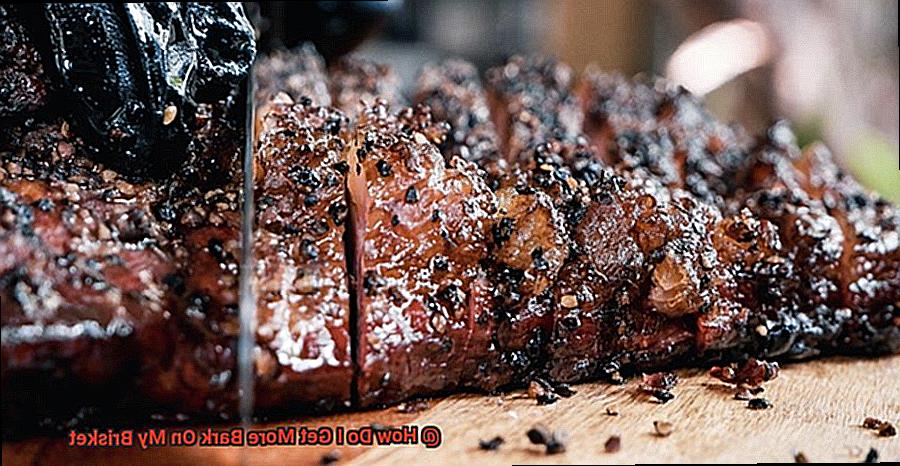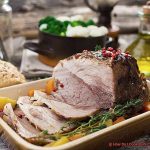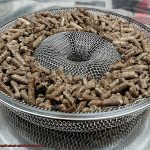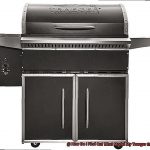Are you tired of serving up briskets that lack the coveted bark that everyone craves? Have you spent countless hours scouring the internet and experimenting with different techniques, only to be left with lackluster results? Fear not, my friend, because I am here to help you achieve that perfect crust.
As a self-proclaimed barbecue enthusiast, I understand the importance of a good bark. It’s not just about the tenderness and flavor of the meat – it’s about that mouthwatering outer layer that adds texture and depth to each bite.
In this post, I’ll be breaking down the key factors that contribute to bark formation. From the type of wood you use to the temperature of your smoker, every detail matters when it comes to achieving that perfect bark. But don’t worry – I’ll also be sharing some insider tips and tricks along the way.
For example, have you tried wrapping your brisket in butcher paper instead of foil? Or spritzing it with apple cider vinegar during smoking? These are just a few techniques that can make all the difference in achieving that coveted crust.
Whether you’re a seasoned pitmaster or a newcomer to the barbecue game, this post is for you. With my expert insights and practical advice, you’ll be able to impress your guests with perfectly-barked brisket every time. So let’s get started – it’s time to up your barbecue game.
Contents
Quality of the Meat Matters
Look no further than the quality of the meat itself. The quality of the meat matters a lot when it comes to getting more bark on your brisket, and there are several factors to consider.
First and foremost, start with a good cut of beef. Look for a brisket with plenty of marbling, as this will help keep the meat moist and tender throughout the cooking process. A prime-grade brisket is ideal, but if that’s not available, opt for a choice-grade brisket.
Next, consider the source of your meat. Grass-fed beef tends to have a deeper, richer flavor than grain-fed beef, which can result in a more flavorful bark. Furthermore, purchasing meat from a local butcher or farmer’s market ensures that you’re getting fresh, high-quality meat that hasn’t been sitting in a package for days.
But it’s not just about the quality of the meat alone. Other factors play crucial roles in creating that perfect bark. For example, a good rub should contain a balance of salt, pepper, and other spices that complement the flavor of the brisket. Apply the rub generously, making sure to cover all sides of the brisket.
Low and slow cooking is recommended for briskets as it allows for the breakdown of collagen and connective tissue while retaining moisture. The ideal cooking temperature ranges from 225°F to 250°F. During cooking, maintain consistent temperatures and mopping or spritzing your brisket with liquid can also help create a flavorful bark.
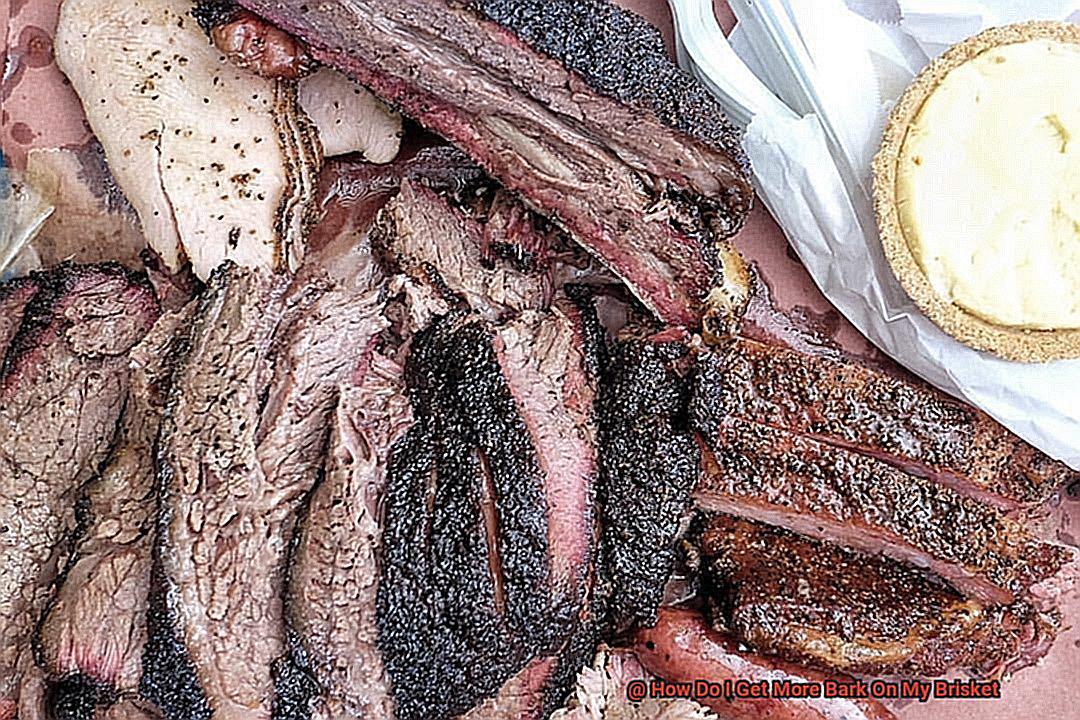
Furthermore, dry-aging your brisket before smoking it can take your bark to the next level. Dry-aging involves leaving the meat uncovered in the refrigerator for several days to allow moisture to evaporate from the surface. This results in a more concentrated flavor and firmer texture, which can help create a better bark during cooking.
Finally, let your brisket rest after cooking for at least an hour before slicing into it. This will allow the meat to reabsorb some of its juices, resulting in a more tender and flavorful brisket with a crispy bark.
Rubs and Seasonings
Look no further than the power of rubs and seasonings. As a seasoned expert in the world of barbecue, let me guide you through the ins and outs of selecting the perfect rub for creating a thick and delicious bark on your brisket.
First, let’s talk about the star of the show: salt. Not only does it add flavor, but it also draws out moisture to help create that coveted bark. When choosing a rub, opt for one with a high salt content or add extra salt to your preferred blend.
But don’t stop there – other vital ingredients include black pepper, garlic powder, onion powder, and paprika. These spices work together to give your brisket depth and complexity, resulting in a rich and savory bark.
When applying your rub, make sure to coat the entire surface of the meat evenly. You can do this directly or use a binder like mustard or olive oil to help the rub stick. After applying, let the brisket sit for at least an hour before cooking to allow the flavors to penetrate the meat fully.
It’s also worth noting that different types of wood used for smoking can impact bark formation. Hardwoods such as oak and hickory tend to produce a thicker bark than fruitwoods like apple or cherry. So if you’re looking for that extra crunch, experiment with different woods to see what works best for you.
Temperature and Time
Then, let’s talk about the power couple of smoking meat: temperature and time. These two elements are essential to creating a succulent brisket with a smoky bark that will make your taste buds sing.
Let’s start with temperature. The ideal range for smoking a brisket is between 225-250°F. This low and slow cooking method allows the meat to cook evenly and develop that coveted bark. However, don’t let the temperature get too high or too low, as this can impact the texture and taste of your brisket. It’s all about finding that sweet spot.
- And let’s not forget about wood selection – it can make all the difference in the world. Hickory wood is known for its strong smoky flavor, while fruit woods like apple and cherry provide a sweet and fruity taste that complements the meat. Your choice of wood can also impact the temperature, so experiment until you find your perfect match.
- Now onto time. Smoking a brisket requires patience – a lot of it. A 10-pound brisket can take anywhere from 10-14 hours to smoke at 225°F. The thickness of the meat and the temperature of your smoker can also impact cooking time, so be sure to keep an eye on the internal temperature with a meat thermometer throughout the process.
Once your brisket reaches around 165°F, wrap it in foil or butcher paper to help retain moisture and continue cooking until it reaches an internal temperature of 195-205°F. This final step is crucial for achieving that melt-in-your-mouth texture that we all love.
Maintaining Consistent Temperatures
Well, to get that perfect smoky bark, maintaining consistent temperatures during the cooking process is paramount. Here are some tips and tricks to help you achieve the perfect brisket.
Invest in a smoker or grill with a built-in thermometer. This will enable you to monitor the temperature without constantly opening the lid, which can disrupt the overall temperature of your meat. Additionally, using a separate meat thermometer to check the internal temperature of your brisket ensures that it’s cooked to perfection.
Fuel quality is also essential when it comes to maintaining consistent temperatures. Whether you’re using charcoal or wood, ensure that it’s dry and free from any debris that could affect the temperature. Keep an eye on the amount of fuel you’re using so that you can add more if needed.
Lastly, avoid opening the lid too often during cooking. Every time you open the lid, heat and smoke escape, leading to fluctuations in temperature and less bark on your brisket. Try not to check on the meat frequently and only open the lid when necessary.
Mopping or Spritzing with Liquid
If you’re a pitmaster looking to take your BBQ game to the next level, look no further than the tried and true technique of mopping or spritzing with liquid. This method involves applying a liquid, such as vinegar or apple juice, to your brisket throughout the smoking process to enhance its bark formation.
However, not all liquids are created equal when it comes to mopping or spritzing. Water or beer, for example, can dilute the flavor and affect the texture of your meat. To get the best results, use acidic liquids with bold flavors like apple cider vinegar or Worcestershire sauce.
Timing and frequency are also key factors to keep in mind. Applying the liquid at least once every hour during the smoking process helps maintain moisture levels and promote bark formation. But be careful not to overdo it; too much liquid can wash away the rub and result in a less flavorful brisket.
Aside from improving bark formation, mopping or spritzing with liquid can also tenderize your meat and add complexity to its flavor profile. It’s a win-win situation for any BBQ enthusiast.
Letting the Brisket Rest After Cooking
After hours of smoking that brisket to perfection, you’re probably eager to carve it up and serve it to your guests. But hold on just a minute. There’s one more crucial step that separates the good briskets from the great ones: letting the brisket rest after cooking.
Why is this step so important? Simply put, when you cook meat, the juices inside it move towards the surface. If you cut into the meat immediately after cooking, those precious juices will spill out and leave you with a dry and tough brisket. But if you let it rest for at least 30 minutes (or up to an hour), those juices will redistribute throughout the meat, resulting in a tender and flavorful final product.
But that’s not all. During this resting period, the temperature of the meat will also stabilize. This means that your brisket will be easier to slice and won’t burn your fingers as you try to handle it.
To ensure that your brisket stays moist during this resting period, cover it with foil or butcher paper. This will prevent it from drying out while still allowing the heat to dissipate evenly throughout the meat. If you’re worried about the bark becoming soggy, leave a small portion of the brisket uncovered to prevent too much condensation from building up.
It’s also important to note that the resting period can vary depending on the size of your brisket. A larger brisket may require a longer resting period in order for the juices to fully redistribute throughout the meat. So be patient. This step is crucial in achieving a perfect final product.
In summary, letting your brisket rest after cooking is a critical step in achieving a juicy and flavorful final product. It may require some patience, but trust us, it’s worth it. Follow these tips to ensure that your brisket stays moist and delicious during this resting period:
- Let your brisket rest for at least 30 minutes (or up to an hour)
- Cover it with foil or butcher paper to prevent it from drying out
- Leave a small portion of the brisket uncovered if you’re worried about the bark becoming soggy
- Adjust the resting period as needed depending on the size of your brisket
Tips for Perfect Bark Every Time
The bark is that crunchy outer layer of the meat that’s packed with flavor, and it takes some finesse to get it just right. But with these tips, you’ll be able to achieve that perfect bark every time.
Firstly, start with a dry rub that contains a mixture of spices and herbs. A good rub should have salt, sugar, paprika, chili powder, garlic powder, and onion powder to create a crust on the meat and develop a good bark. Apply the rub generously and let it sit for at least an hour before smoking.
Secondly, use mustard as a binder for your dry rub. The mustard helps the rub adhere to the meat and also adds flavor to the bark. It’s a simple but effective trick that many pitmasters swear by.
Thirdly, temperature is key. Smoking your brisket at a low temperature (around 225°F) for a longer period of time allows the flavors from the dry rub to penetrate the meat while also allowing time for the bark to form. This slow cooking process is essential for achieving a thick and flavorful bark.
Fourthly, use a mop sauce during smoking. A mop sauce is a thin liquid used to baste the meat. Using a mop sauce that contains vinegar or apple juice will help break down the outer layer of the meat and create a more intense bark.
Finally, resting your brisket is crucial. After your brisket is finished cooking, let it rest for at least 30 minutes before slicing into it. This allows the juices to redistribute throughout the meat and prevents moisture from seeping into the bark, which can soften it.
J8grEZFjYew” >
Conclusion
In conclusion, achieving the coveted bark on your brisket is not an easy feat, but it’s definitely worth the effort. It requires a keen eye for detail and a willingness to experiment with different techniques until you find what works best for you.
To start, selecting high-quality meat is essential. But that’s just the beginning. Using the right rub and maintaining consistent temperatures throughout the cooking process are equally important factors that must be taken into consideration.
Investing in a smoker or grill with a built-in thermometer can make all the difference in ensuring that your brisket cooks evenly. Additionally, using dry fuel and avoiding opening the lid too often will help maintain consistent temperatures.
Mopping or spritzing your brisket with acidic liquids like apple cider vinegar can add flavor while also tenderizing the meat, resulting in a mouthwatering final product.
Dry-aging your brisket before smoking it and allowing it to rest for at least 30 minutes after cooking are crucial steps in achieving a juicy and flavorful end result. And let’s not forget about the power of rubs and seasonings – salt, black pepper, garlic powder, onion powder, and paprika work together to give your brisket depth and complexity.
By following these tips, you’ll be well on your way to wowing your guests with perfectly-barked brisket every time.

